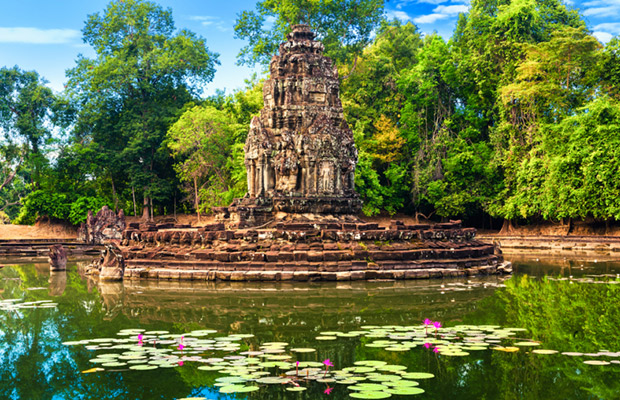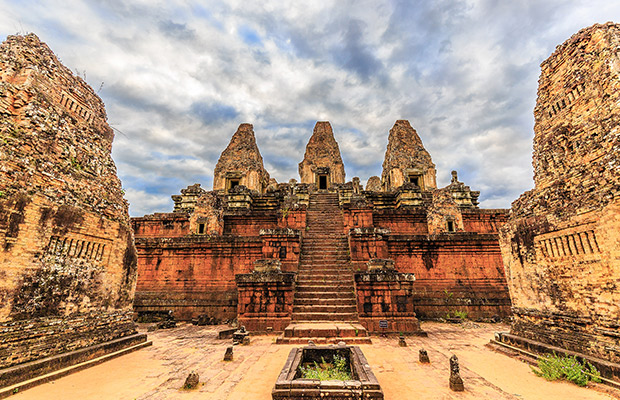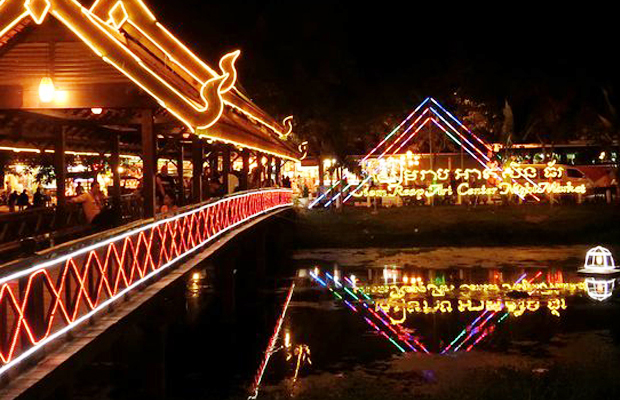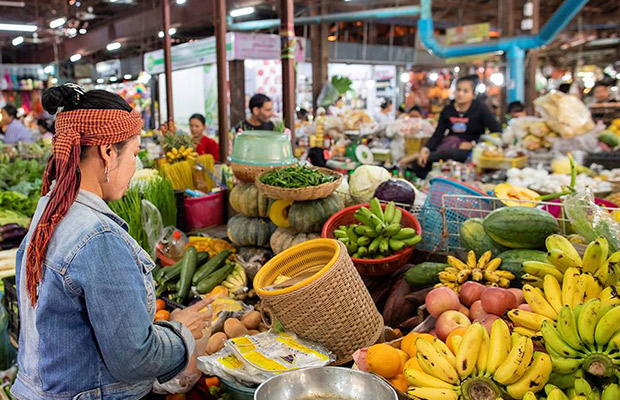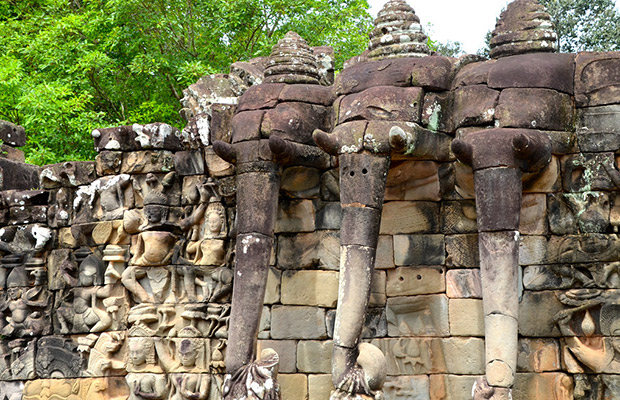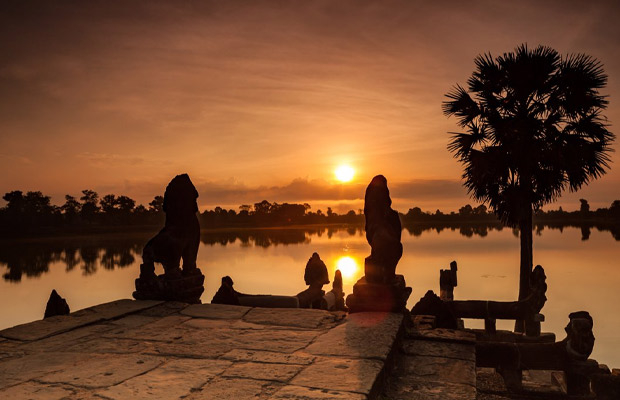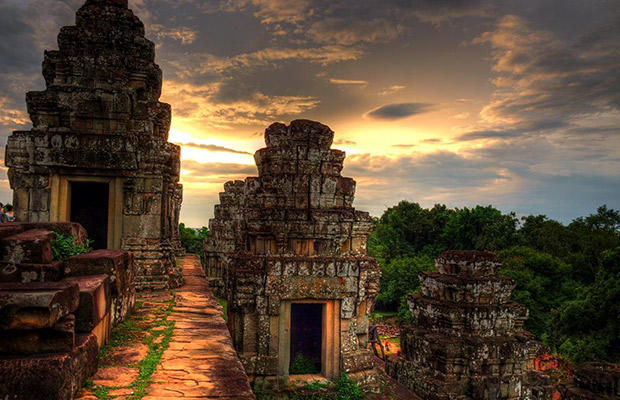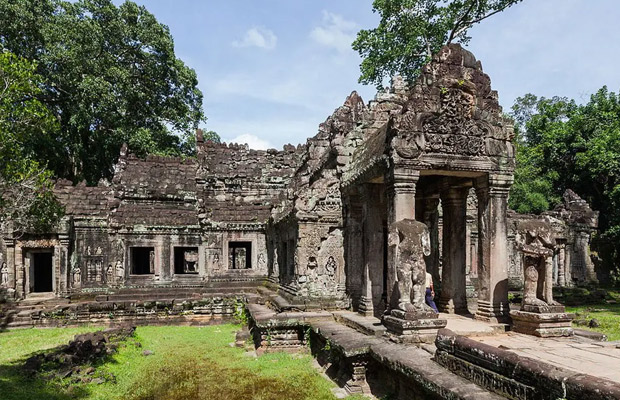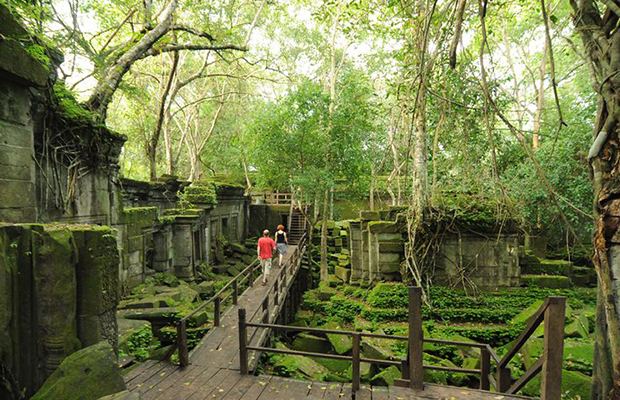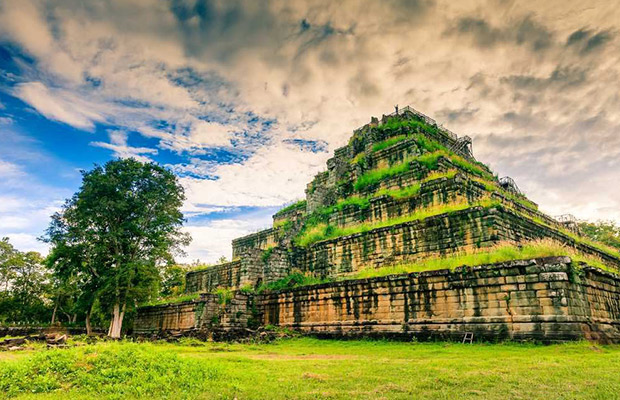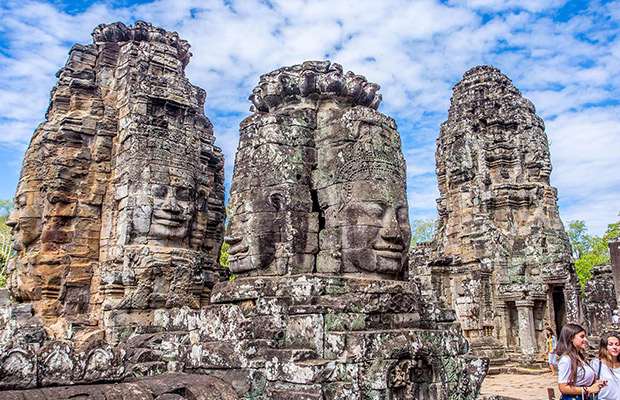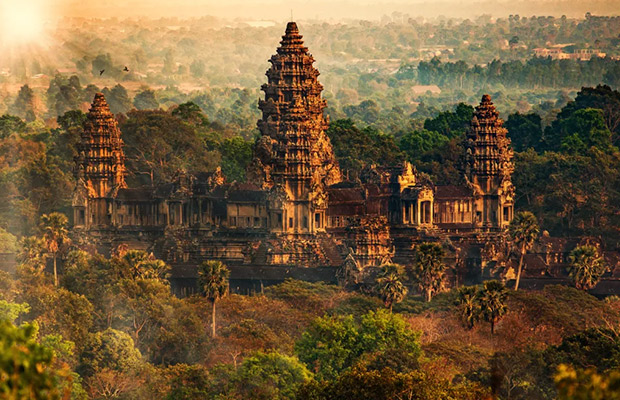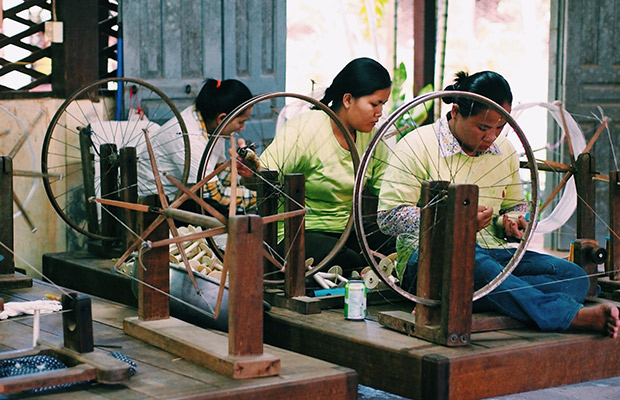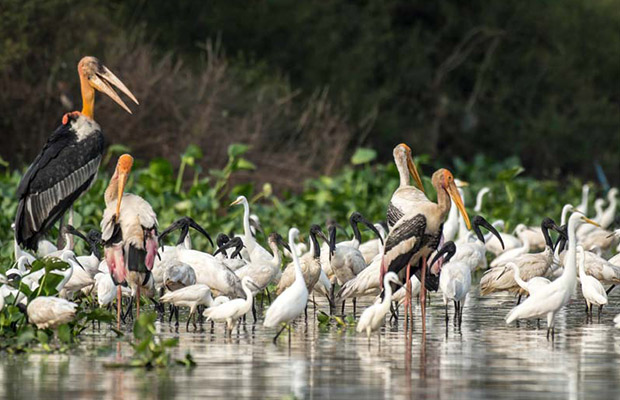Attractions
The tiny 12th-century Buddhist temple of Neak Pean (sometimes written Neak Poan or Neak Poun sits on a circular stone island in a square pool, framed by four more pools, all built on an island in the middle of a lake. The temple’s name means “entwined serpents.”
A favorite Angkor sunset spot, Pre Rup is a 3-tier mountain temple topped with five sanctuary towers. Built in 961 AD as a temple to the Hindu god Shiva, Pre Rup’s name means “turn the body,” and some believe it was used for cremations. Its warm brickwork and red laterite stone look beautiful at sunrise or sunset.
The sprawling temple complex of Angkor Thom, an ancient Khmer capital formerly ringed by a crocodile-infested moat, surpasses the world-famous Angkor Wat in both size and scale. Each of the site’s five gates are heralded by avenues lined with 108 deities that represent good and evil, which provide spectacular photo opportunities before you even step inside.
The Siem Reap Art Center Night Market is open from morning until late in the evening, but it is more of a night market than an art center. Close to the Old Market (Phsar Chaa or Phsar Chas), the site boasts a wealth of stalls selling crafts, souvenirs, the obligatory elephant pants, and snacks.
With everything from handicrafts to fresh produce, Siem Reap’s Old Market (Phsar Chas draws a mixed crowd of locals and tourists. While there’s plenty of souvenir shopping to do here—look for hand-woven, colorful silks—the market is also a fascinating snapshot of daily life in Siem Reap, complete with vendors hawking deep-fried bugs.
Located within the ancient walled city of Angkor Thom and part of the Angkor temples UNESCO World Heritage Site, the Terrace of the Elephants is renowned for its exquisite stone carvings. Built at the end of the 12th century by King Jayavarman VII, the temple takes its name from the depictions of parading elephants that adorn the terrace walls.
Srah Srang is a small but quite picturesque baray (ancient Khmer reservoir), located to the east of Banteay Kdei. It was designed and constructed in the same mountain-temple style as Pre Rup and was remodelled in the 12th century by King Jayavarman VII as part of his building program.
Phnom Bakheng is a Hindu temple in the form of a temple mountain in Siem Reap Province, Cambodia. Dedicated to Shiva, it was built at the end of the 9th century, during the reign of King Yasovarman.
Banteay Srei is a 10th century CE Cambodian temple dedicated to the Hindu god Shiva and Parvati. Located in the area of Angkor, it lies near the hill of Phnom Dei, 25 km north-east of the main group of temples that once belonged to the medieval capitals of Yaśodharapura and Angkor Thom.
Preah Khan temple is located in the Angkor Archaeological Park and is still largely unrestored. It is one of the larger temple complexes within the historic park. Preah Khan translates to “Holy Sword” in Khmer, named by Jayavarman VII in honor of his battle victory against the invading force of Chams, who belonged to a kingdom in what is now Vietnam, in the year 1191.
Beng Mealea, or Boeng Mealea, is a temple from the Angkor Wat period located 40 km east of the main group of temples at Angkor, Cambodia, on the ancient royal highway to Preah Khan Kompong Svay.
The city of Koh Ker was the capital of the Khmer Empire between 928 AD and 944AD during the reigns of Jayavarman IV and Harshavarman II. Imagine this ancient city as it was – a thriving, busy hub – as you explore the now dilapidated carved sandstone rubble that would once have been home to over 10,000 inhabitants. An unusual seven-tiered pyramid structure, named Prang, nestled in ever-encroaching jungle and yet towering proudly at 36 metres high, dominates this lesser-known archaeological site, lying around 120 km north east of Siem Reap.
Ta Prohm is the modern name of a temple near the city of Siem Reap, Cambodia, approximately one kilometre east of Angkor Thom and on the southern edge of the East Baray. It was built in the Bayon style largely in the late 12th century and early 13th century and was originally called Rajavihara.
The Bayon is a richly decorated Khmer temple related to Buddhism at Angkor in Cambodia. Built in the late 12th or early 13th century as the state temple of the King Jayavarman VII, the Bayon stands at the centre of Jayavarman’s capital, Angkor Thom.
Angkor Wat is a Hindu-Buddhist temple complex in Cambodia, located on a site measuring 162.6 hectares. It resides within the ancient Khmer capital city of Angkor. The Guinness World Records considers it as the largest religious structure in the world.
Angkor Silk Farm belongs to Artisans Angkor, a social-business enterprise aiming at reviving Khmer cultural heritage while giving job opportunities to young Cambodians living in rural areas.Free guided tours through the eight hectare farm give a unique insight into the different stages involved in silk production, from the mulberry tree orchards, silkworm breeding, the spinning mills and the dying and weaving processes in the very traditional way. A shop is there for visitors as well. Tours are in English, French, Spanish, Chinese, Korean,Japanese or Khmer.
Angkor Botanical Garden (សួនរុក្ខជាតិអង្គរ), previously known as the Angkor Spice Garden, has been undergoing upgrades for some time and is now open to the public. The 14-hectare site is educational and relaxing featuring local traditional medicinal plants & spices, flowers, palm garden, Khmer inspirational garden, and Angkor forest garden.
The world famous sanctuary harbours seven species of water birds of global significance: Spot billed Pelican, Milky Stork, Painted Stork, Lesser Adjutant, Greater Adjutant, Black headed Ibis, Oriental Darter, there is a globally significant population of Grey-headed Fish Eagles and the secretive Masked Finfoot was spotted on an SVC trip in March 2011, over 150 species have been recorded in the reserve.

